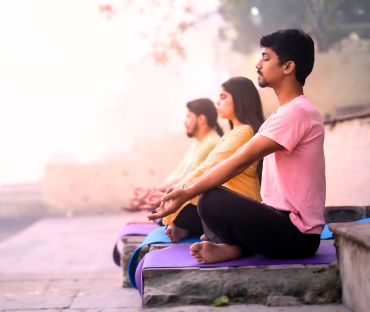


Poor posture and lack of movement can negatively impact the spine, leading to stiffness, soreness, and even chronic back issues over time - the good news is that yoga is an effective solution. These are beginner yoga poses that you can easily follow along.
It is a fantastic yoga pose for back health, especially for those who spend a lot of time sitting. This backbending asana gently stretches and strengthens the spine, improving posture and relieving tension.
Lie on your stomach with your hands under your shoulders.
Inhale as you lift your chest off the mat, keeping your elbows close to your body.
Gently arch your back, feeling the stretch along your spine.
Hold the pose for a few breaths, then exhale and slowly lower back down.
Gently stretches and strengthens the spine.
Improves posture by engaging the back muscles.
Relieves tension in the back, especially for those who sit for long hours.
Tree pose yoga is a classic balance pose that requires focus and stability, which can have a positive impact on your spine. By standing on one leg and engaging your core, you strengthen the muscles that support your back and improve your overall posture.
Stand with your feet hip-width apart, arms at your sides.
Shift your weight onto your right leg and place your left foot on your right ankle, calf, or inner thigh, depending on your flexibility.
Bring your palms together at your heart center, and focus your gaze on a fixed point in front of you to maintain balance.
Hold the pose for several breaths, then switch sides.
Improves balance and stability, crucial for spinal health.
Strengthens the core muscles that support the spine.
Enhances overall posture and alignment.
This is a side-bending asana that stretches and strengthens the entire side of the body, including the spine. This pose can help improve flexibility, balance, and core strength, all of which are important for a healthy back.
Stand with your feet about 3-4 feet apart.
Turn your right foot out 90 degrees and your left foot in slightly.
Extend your arms out to the sides.
Reach your right hand down to your right ankle or the floor, and your left hand up towards the ceiling.
Gaze up towards your left hand, feeling the stretch along the side of your body.
Hold the pose for several breaths, then switch sides.
Stretches and strengthens the entire side of the body, including the spine.
Improves flexibility, balance, and core strength.
Helps alleviate back pain and stiffness.
The plank pose is a powerful core-strengthening exercise that can have a significant impact on your spine. By holding this pose, you engage the muscles in your back, abdomen, and arms, which work together to support your spine and improve your posture.
Start in a high push-up position with your hands directly under your shoulders and your body in a straight line from your head to your heels.
Engage your core by drawing your navel in towards your spine.
Hold the pose for 30 seconds to a minute, maintaining proper alignment.
Engages the muscles in the back, abdomen, and arms to support the spine.
Strengthens the core, which is essential for good posture and spinal alignment.
Helps improve overall body awareness and stability.
This yoga pose is a foundational standing pose that can help improve your overall posture and alignment. By standing tall with your feet hip-width apart, engaging your core, and distributing your weight evenly, you strengthen the muscles that support your spine.
Stand with your feet hip-width apart, your arms at your sides, and your gaze forward.
Engage your core, lift your chest, and feel your spine lengthen.
Take a few deep breaths, and notice the sense of stability and grounding in your body.
Improves overall posture and alignment by strengthening the muscles that support the spine.
Promotes a sense of grounding and stability in the body.
Helps cultivate body awareness and mind-body connection.
Incorporating these five yoga for beginner poses into your regular yoga at home practice can help keep your spine healthy and strong. Whether you're dealing with yoga for lower back discomfort or simply want to maintain spinal health, yoga has something to offer for everyone! So grab your yoga mat today and make your spine happy!